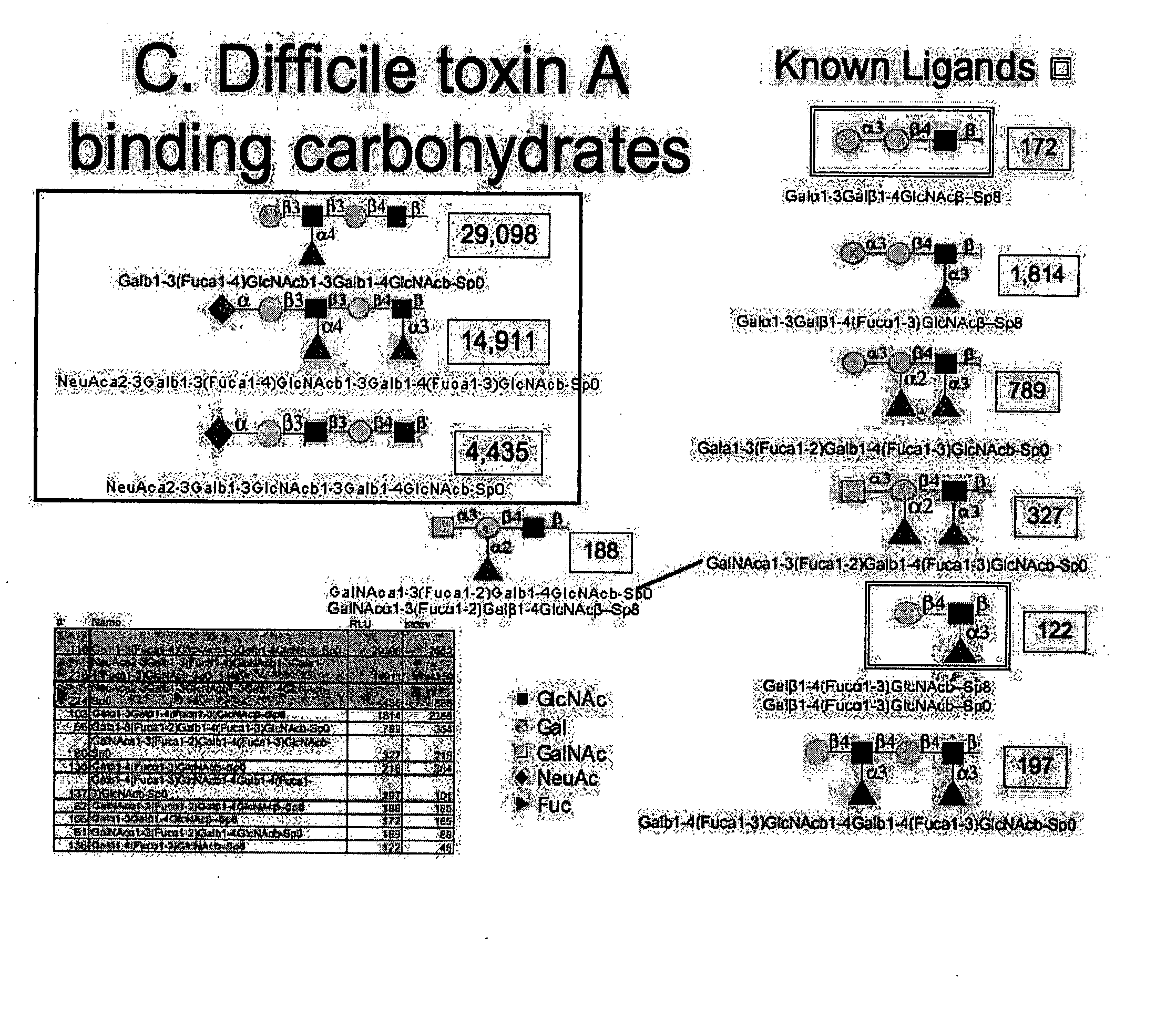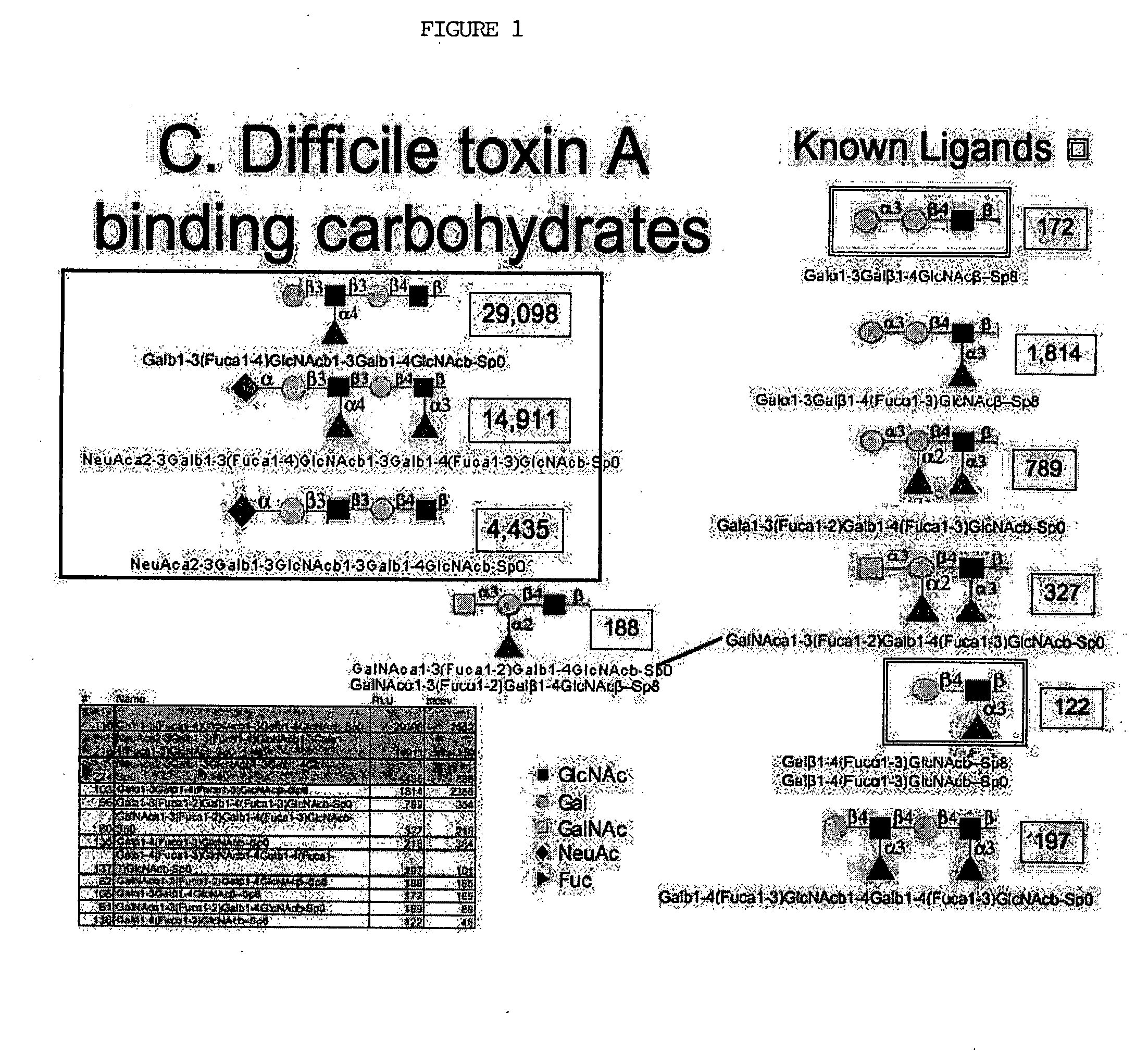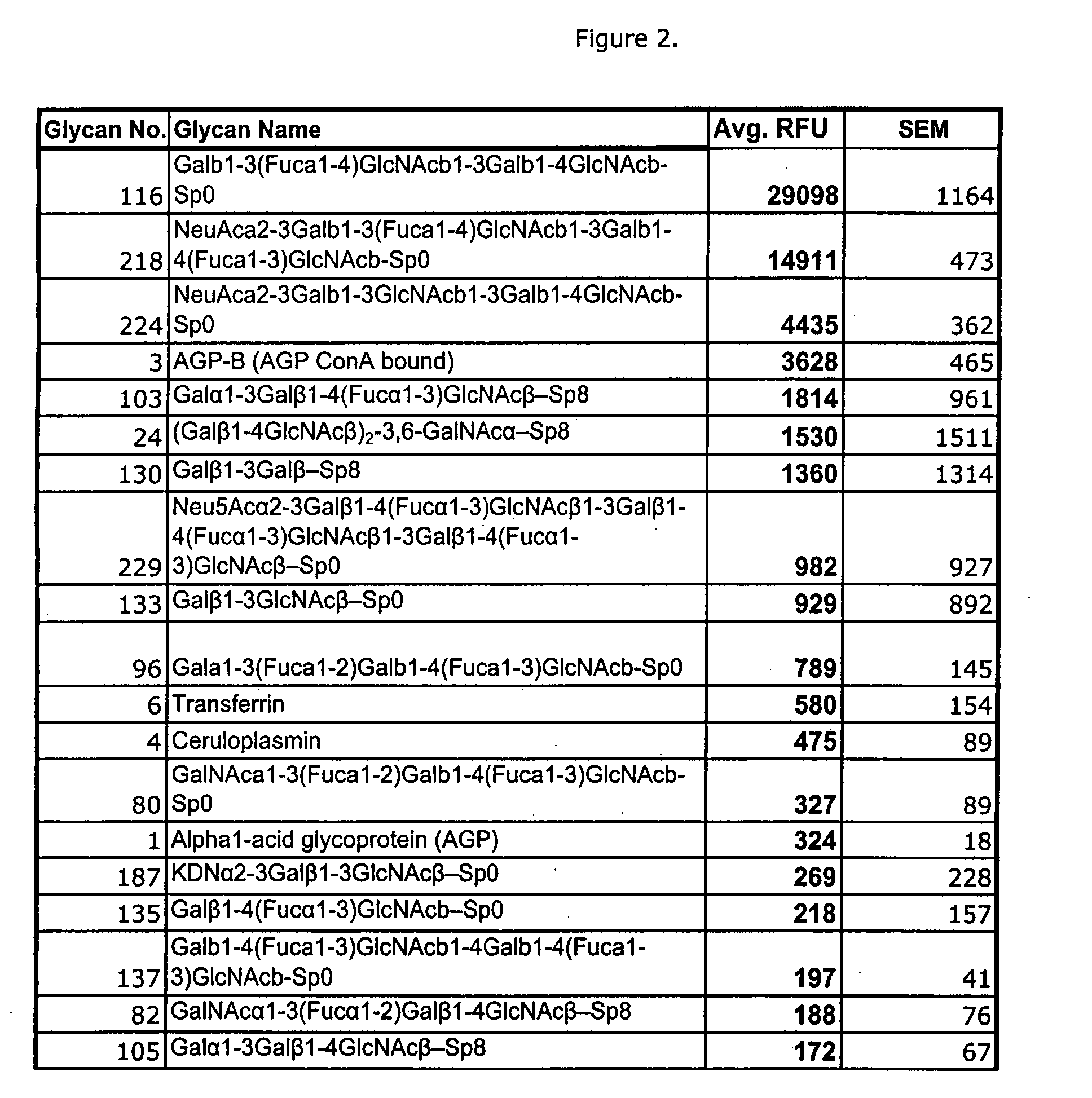High affinity ligands bind to clostridium difficile toxin A
a technology of clostridium difficile and toxin, which is applied in the field of high affinity ligands bind to clostridium difficile toxin, can solve the problems of i>c. difficile development, high relapse rate, and particular problem of /i>difficile infection, so as to reduce symptoms, delay the onset of clostridium difficile, and reduce the effect of clostridium difficile mediated intestinal damag
- Summary
- Abstract
- Description
- Claims
- Application Information
AI Technical Summary
Benefits of technology
Problems solved by technology
Method used
Image
Examples
example 1
Introduction
[0043] Previous work showed that of C. difficile toxin A binds to carbohydrates that contain Gal alpha 1-3Gal beta 1-4GlcNAc. Since unsubstituted Gal alpha 3Gal beta 4GlcNAc beta sequences are not found in human tissues (due to suppression of the gene coding for the human enzyme Gal beta 3-transferase,) we reasoned that the actual physiologic target of toxin A must represent another oligosaccaharide. Accordingly, our study was undertaken to identify other oligosaccharide structures bound by toxin A. Binding to Gal alpha 3Gal beta 4GlcNAc beta-terminated glycosphingolipids of rabbit erythrocytes has also been demonstrated by Teneberg et al. Additional binding-active glycosphingolipids included GalNAc beta 3Gal beta 4GlcNAc beta 3Gal beta 4Glc beta 1Cer, GalNAc alpha 3Gal beta 4GlcNAc beta 3Gal beta 4 Glc beta 1 Cer, GalNAc alpha 3 (Fuc alpha 2) Gal beta 4GlcNAc beta 3Gal beta 4Glc beta 1 Cer, and GlcNAc beta 3 Gal beta 4 GlcNAc beta 3 Gal beta 4 Glc beta 1 Cer.
example 2
Glycan Array Fabrication and Glycan Array Analyses
[0044] To define the carbohydrate binding specificity of C. difficile toxin A, we utilized a glycan microarray constructed by using standard robotic microarray printing technology containing amine functionalized glycans coupled to an amino-reactive glass slide at the Consortium for Functional Glycomics (see website at functionalglycomics.org). This array comprises over 260 synthetic and natural glycan sequences representing major glycan structures of known glycoproteins and glycolipids spotted in multiple replicates. Microarrays were printed as described in Blixt et al. Purified Clostridium difficile toxin A was applied to the slide at 200 micrograms / ml and incubated under a microscope cover-glass in a humidified chamber for 30 to 60 min. Unbound material was washed away, and bound toxin A was detected with mouse anti-C. difficile toxin A monoclonal antibody, PCG4 (10 ug / ml; available from GeneTex). Secondary Goat anti-mouse antibod...
example 3
Results
[0045]C. difficile toxin A has previously been documented to recognize a carbohydrate antigen, Lewis×(Galb1-4[Fuca1-3]GlcNAcb) (Infection and Immunity 59:73-8, 1991) and (Galb1-3Galb1-4GlcNAcb) (Biochem Cong. 8:466-71, 1997). Please refer to FIG. 1. Binding to these carbohydrate structures was demonstrated in our system, albeit weak, with fluorescence (FL) signals of 122 / 218 and 172 respectively. However, our analysis also demonstrated a number of more complex structures, with greater relative affinities; Gala1-3Galb1-4(Fuca1-3)GlcNAcb-(FL 1814), Gala1-3(Fuca1-2)Galb1-4(Fuca1-3)GlcNAcb-(FL 789), GalNAca1-3(Fuca1-2)Galb1-4(Fuca1-3)GlcNAcb-(FL 327), and GalNAca1-3(Fuca1-2)Galb1-4GlcNAcb-(FL 188). Each of these oligosaccharides bound toxin more strongly than the previously identified structures. These results support the importance of alpha 2 or 3 linked fuc and also demonstrate that GalNAca1-3 can substitute for Galb1-3 on the Galb1-3Galb1-4GlcNAcb backbone.
[0046] The array b...
PUM
| Property | Measurement | Unit |
|---|---|---|
| non-absorbable | aaaaa | aaaaa |
| structure | aaaaa | aaaaa |
| pharmaceutical composition | aaaaa | aaaaa |
Abstract
Description
Claims
Application Information
 Login to View More
Login to View More - R&D
- Intellectual Property
- Life Sciences
- Materials
- Tech Scout
- Unparalleled Data Quality
- Higher Quality Content
- 60% Fewer Hallucinations
Browse by: Latest US Patents, China's latest patents, Technical Efficacy Thesaurus, Application Domain, Technology Topic, Popular Technical Reports.
© 2025 PatSnap. All rights reserved.Legal|Privacy policy|Modern Slavery Act Transparency Statement|Sitemap|About US| Contact US: help@patsnap.com



